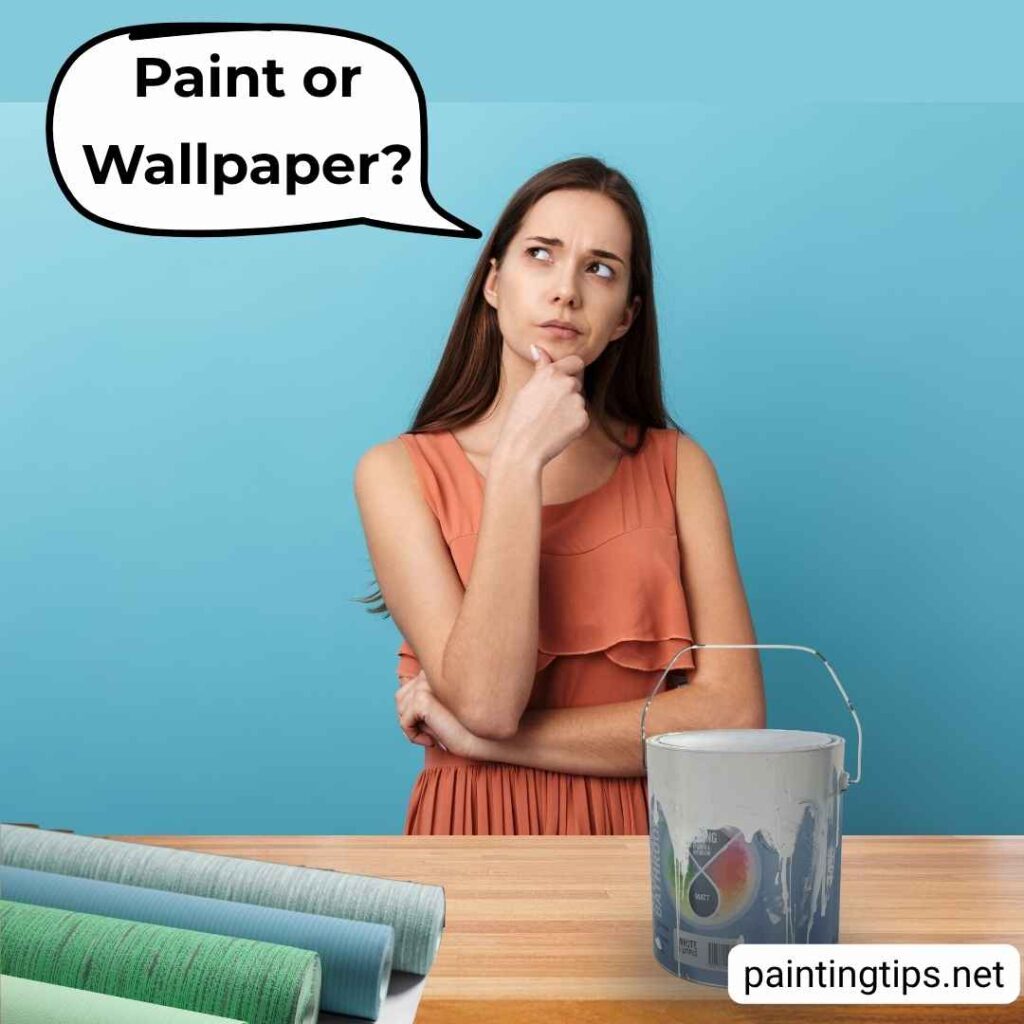Thinking about refreshing your interior? The big question many homeowners ask is: paint or wallpaper? While both options can give your walls a fresh new look, they each come with their own pros and cons. In this guide, we’ll take a deep dive into the paint vs wallpaper debate so you can decide what’s right for your home, your budget, and your lifestyle.
Paint or Wallpaper

Choosing between paint or wallpaper isn’t just about personal taste—it’s a key design decision that affects durability, maintenance, indoor air quality, and the overall mood of your home.
Many homeowners wonder whether to choose wallpaper or paint, especially when updating a bedroom, living room, or hallway. Paint creates a smooth, clean look with endless color options, while wallpaper adds texture, patterns, and depth that can instantly transform a space. Understanding the advantages, drawbacks, and long-term performance of each option is essential for making the right choice.
What Are the Disadvantages of Wallpaper
While wallpaper can make a bold design statement, it does come with some notable drawbacks. One of the main disadvantages is the higher cost compared to painting, especially when professional installation is needed for complex patterns. Removing old wallpaper can be labor-intensive and time-consuming, often requiring steaming, chemical solutions, or careful scraping. Certain types, such as vinyl, may trap moisture behind walls, which can lead to peeling or mold in humid environments.
Cleaning wallpaper can also be tricky. Some surfaces are not washable, and scrubbing too aggressively may damage the material or loosen the adhesive. These factors make wallpaper less suitable for kitchens, bathrooms, or other high-traffic areas where frequent cleaning is necessary.
Despite these challenges, wallpaper remains popular for its decorative impact and its ability to conceal imperfections. It can effectively cover minor cracks or uneven surfaces better than paint. Many homeowners still choose wallpaper for accent walls or feature areas where style and texture are priorities. Considering the wallpaper vs painting comparison, it is clear that wallpaper offers longevity and unique design options, but it requires more effort and care than paint.
Is It Better to Paint or Wallpaper? Which Should You Choose
Deciding whether to go with paint or wallpaper depends on your priorities, budget, and the intended use of the room. Painting is often the faster and more affordable option, making it simple to refresh a space whenever you want. It offers flexibility, quick updates, and easier maintenance. Water-based or low-VOC paints also help improve indoor air quality and prevent moisture buildup. Painted walls are especially practical for high-traffic areas and can be easily touched up if scratched or stained.
Wallpaper, on the other hand, provides a long-lasting and visually impactful solution. High-quality wallpaper can remain intact for many years, offering texture, pattern, and character that paint alone cannot achieve. It is particularly effective for accent walls or formal spaces where a strong design statement is desired. While installation and removal require more effort than painting, the durability and decorative benefits often make it worth the investment.
Ultimately, the choice comes down to whether you prioritize convenience and flexibility or style and long-term design impact. Weighing the pros and cons of wallpaper alongside the benefits of paint will help you decide which option best suits your home, your style, and your practical needs. Understanding is it better to paint or wallpaper ensures you make a choice that creates a beautiful, functional space that will last for years. “You might also be interested in: Paint over wallpaper“
Frequently Asked Questions
Which is Better, Wallpaper or Paint?
Both have their strengths. Paint is more affordable, healthier for airflow, and easier to apply. Wallpaper lasts longer and provides more decorative impact. It really depends on your needs and the space you’re working on.
Is it Cheaper to Paint a Room or Wallpaper?
Painting is almost always cheaper. Paint covers more area for less money, and you can usually DIY without hiring a professional. Wallpaper, especially designer types, comes with higher material and labor costs.
Why do People Use Wallpaper Instead of Paint?
People often choose wallpaper for its unique textures, patterns, and elegance. It can instantly elevate the look of a room and hide wall imperfections more effectively than paint.
Which Lasts Longer, Wallpaper or Paint?
Wallpaper typically lasts longer—up to 15 years or more—while painted walls may need a refresh every 3–7 years, depending on wear and tear.